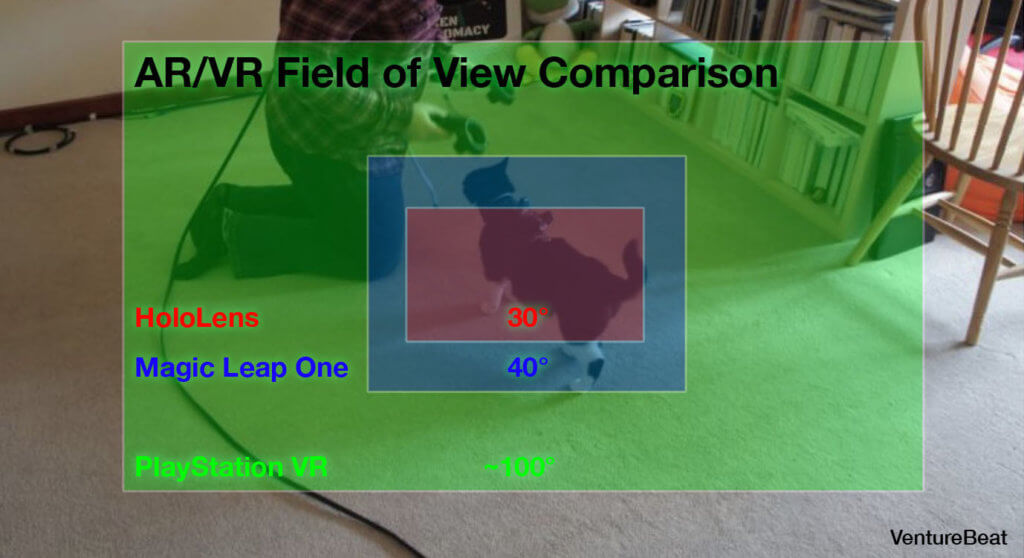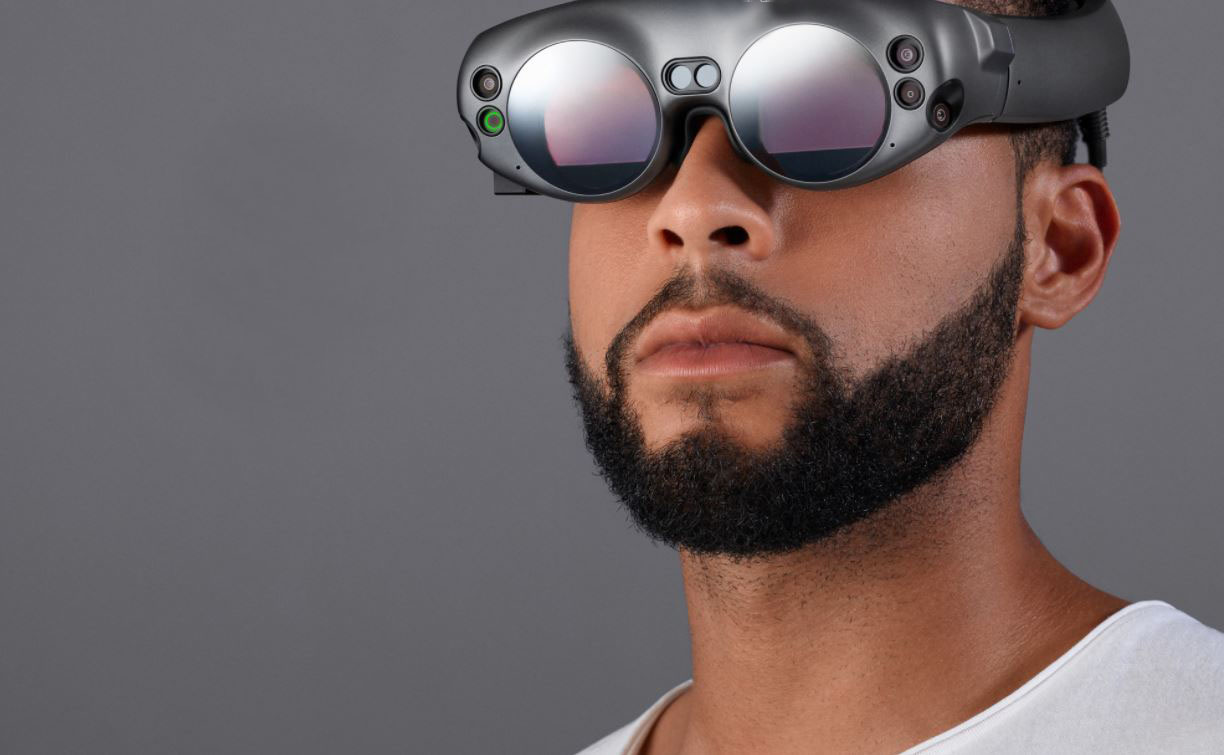For over one year, Magic Leap has teased its mixed reality kit and raised quite a fair amount of funding from tech giants. Yet, the Magic Leap AR glasses are still not available on the market. However, now we do know more about their specs, as Next Reality spotted, deep in the official website source code, the actual Magic Leap field of view.
Coming with a 4:3 aspect ration, the Augmented view has a generous 40-degree horizontal by 30-degree vertical view, which is similar to what the Leap Motion Project North Star brings.
As this report explains, “at 40-inches, the FoV is sufficient to show a large house cat” while, if you go to 144-inches, the Magic Leap One can “display a trio of six-foot-tall people.”
What’s weird is the actual slang used by Magic Leap in the source code. Instead of using “field-of-view” or FOV in short, the company calls it “viewing frustrum”. It seems it actually has a good reason to do so:
“Field of View is widely used in XR to measure the viewable area a person can see through a device like Magic Leap One. While helpful in providing a baseline measure, Field of View can be misleading as it is a 2D concept and does not fully describe the three-dimensional attributes of space directly visible through our device. A 2D Field of View is a relative measure and is dependent upon the depth and scale of the content being viewed.
Instead, the term Viewing Frustum (or View Frustum) better describes the three-dimensional space within which lightfield objects are viewed. With a focus on design guidelines and best practices, our volumes can range from hand sized characters to larger objects like 90″ TV screens or even spaceships. Spatial computing is about working in volumes and spaces, not just a 2D Field of View.”
In any case, Venture Beat dutifully posted a sketch to compare the Magic Leap AR Glasses with competitors like HoloLens and Playstation VR.

Now all we need is an actual release date, not just a vague “this summer.”
Also read: ✍Magic Leap’s New Demo Is Quite Disappointing✍
Follow TechTheLead on Google News to get the news first.























